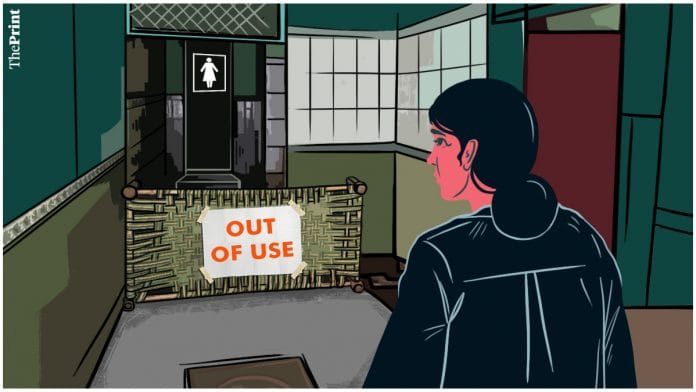A small town in western Uttar Pradesh known for stainless steel pipes has a judicial system that can make any district in India envious. It has 13 women judges and around 200 women lawyers.
Hapur should be a postcard for the rising number of women in judiciary in small-town India, especially at the level of judges. It’s not. Instead, it has become one for the restrictive court infrastructure that continues to fail women. At the heart of this deficit is the toilet.
Out of four tiny toilets for women at the Hapur district court, only one is functional. But its door is cracked leaving no privacy for women, and there is no water.
On a recent afternoon, the smell of urine wafted through judge Shweta Dixit’s POCSO courtroom, corridor and chamber.
Indrayi Dwivedi, a courtroom staffer, said she usually waited for eight long hours to be able to go home to use the toilet, even when on her period. Gurbahaar Chaudhary, a first-generation advocate from a nearby village called Ghungrala, had to slink through a narrow passage full of men to reach the only functional toilet.
Many said it is ironic that this is the situation in a court with so many powerful women. Even the district’s top three officers—the District Magistrate (DM), Additional District Magistrate (ADM) and the Chief Development Officer (CDO)—are women. But all the confidence women derive through their education and work is undermined when they encounter such abysmal infrastructure and lack of separate clean workplace toilets. It’s never a minor issue.
Former Chief Justice of India NV Ramana said last year that courts in India still function out of rented halls, many without basic facilities such as toilets and computers. His speech led to a Supreme Court proposal to set up a National Judicial Infrastructure Development Authority of India. But this was not accepted by the states or the Centre. A year later, Union Law Minister Kiren Rijiju told the Lok Sabha that the proposal had been withdrawn.
“For the longest time, courts have been perceived as a sacred place where people get justice rather than a workplace. So, infrastructure reforms have not really materialised yet,” said Deepika Kinhal, senior resident fellow with Vidhi Centre for Legal Reform Policy.
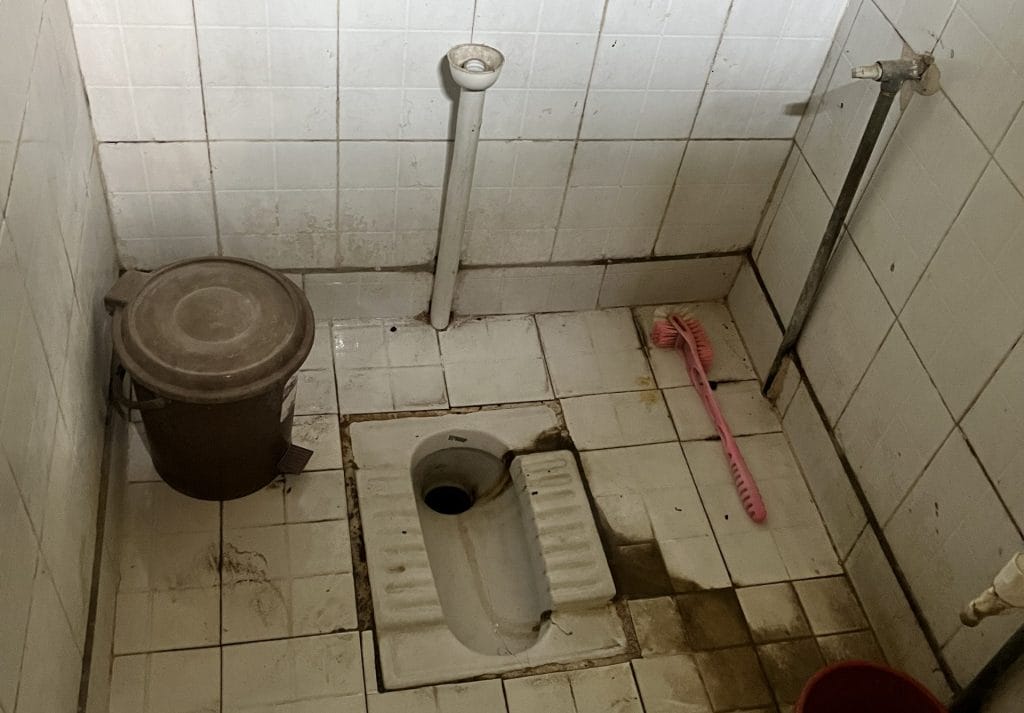
Also read: Eight out of 10 Rajasthan judicial exam toppers were women. Get ready for army of female judges
The missing washroom
Justice may be served at district courts, but dignity has been denied.
Of the 74 district courts in Uttar Pradesh, four don’t have a single washroom, while seven have no facilities for women, stated a 2019 report by Vidhi.
Only eight court complexes had fully functioning washrooms.
Bad infrastructure impacts all genders, but it extracts a heavier toll from women judges, said Kinhal.
The report also highlighted other glaring infrastructure problems: Only 22 court complexes have waiting areas and barely six have help desks. District courts were graded based on nine parameters from hygiene to security. Only 12 district courts scored 50 per cent and above. Hapur scored 30 per cent.
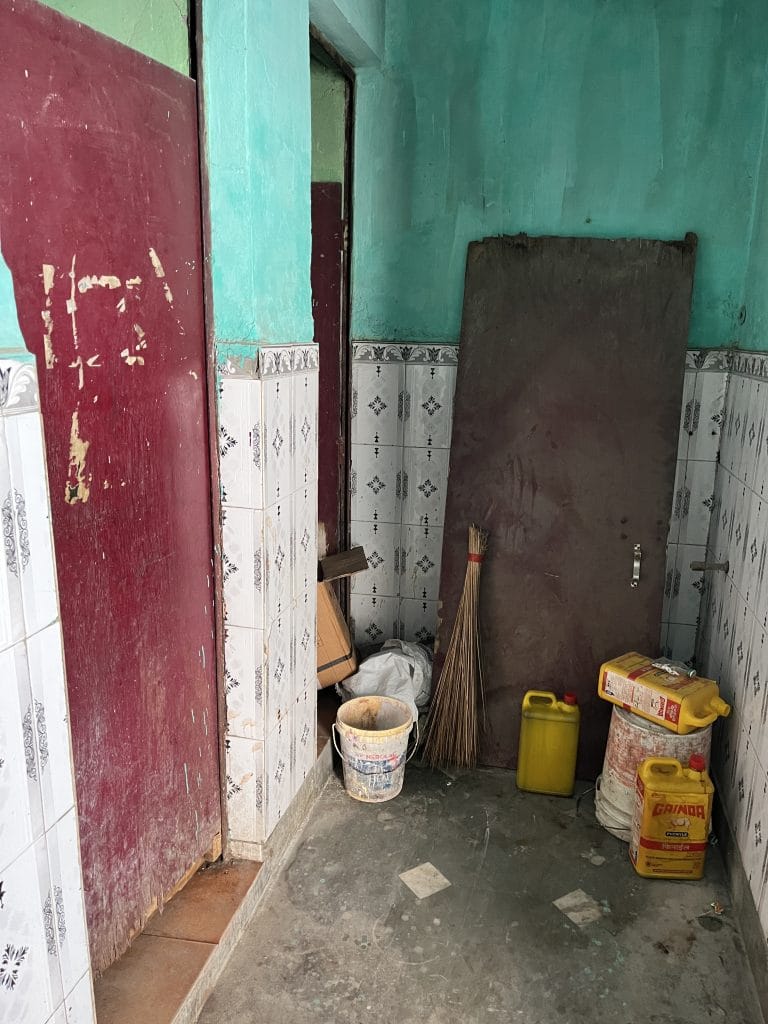
Also read: Mathura, Hapur, Jhajjar – Small-town divorces rising and shocking courts, lawyers, families
A new wave of women clashes with old infra
In many parts of both UP and India, district courts have grown organically at a time when women were still storming the male-dominated bastion.
Once a part of Ghaziabad, Hapur came into existence as an independent district only in 2011. While most administration officers worked out of temporary offices, the district court started functioning out of a nagar palika and tehsil building.
Later, the administration got its own new Collectorate Building, but the old district court was passed over. Meanwhile, the caseload increased, demand for judicial officers grew and more women became a part of the judicial machinery
“Now, you have these young women coming in large numbers, but the state is still not ready to make changes to accommodate them. The Bar and Bench has been a space where they have historically been excluded,” said a former Allahabad High Court judge, who, like other young women, began her professional career in a district courtroom.
The long walk to the washroom was a rite of passage she could have done without. That was more than two decades ago, and nothing has changed.
“In 2014, when there was no space for new courtrooms, we gave up our bar association office, and collected Rs 4.5 lakh to construct a courtroom,” said Bar secretary Ravinder Singh Nimesh. The office was converted into two chambers for judges–Courtroom 13 and 14. “But then we realised there was no washroom, so a 3-ft small space was used as a tiny common washroom for the judges.”
Other chambers were also partitioned in a similar ad hoc manner. The lack of space—and privacy—was resolved by ensuring that the occupants of the partitioned chambers are either married or are of the same gender.
“It has become an obligation for the district judge to deploy a husband-wife, or two female judges or two male judges in that space,” Nimesh added.
But this planned pairing is not really a solution. The cramped chambers and constant commotion are some things that additional district judge (POCSO) Shweta Dixit has to deal with every day even when reading her material before pronouncing a judgment. It was not what the 37-year-old imagined when she passed the judicial examination in 2006.
In July, district magistrate Medha Roopam inspected Hapur district court to identify and improve infrastructural gaps. She admitted that the public washrooms “were in a very bad condition”.
“The doors were broken and there were bushes all around. I’ve ordered four new washrooms,” she said.
But the problem is more than just washrooms. Since the start of 2022, lawyers have been staging multiple protests demanding land for ‘proper’ court premises— they even met Chief Minister Yogi Adityanath.
According to Roopam, the administration has not been able to finalise a plot of land yet. “They [lawyers] have identified a private plot that will cost the state government Rs 143 crore. We are asking them to choose government land,” she said.
As one of the most senior women officials in the administration, Roopam empathises with the women “lekhpals, nayab tehsildars and orderlies” who are vital to the smooth running of the court complex.
“The system is trying to make sense of the number of women who have been joining the workforce now,” she said.
And courts across Uttar Pradesh are scrambling to accommodate them.
“In the 1990s, we had a long fight for the construction of a ladies common room with an attached bathroom in Delhi High Court. It was eventually built, but one can only imagine the situation in subordinate courts,” said senior Supreme Court Lawyer, Rebeecal Mammen John.
It goes back to the fact that architects, not just in India but world over, are men. “…It’s all built by men, keeping the men in mind. And that’s why you see least attention being paid to the female gender.”
Female judicial officers are still able to “attract some attention towards their needs.” The needs of female advocates and the litigants should also be taken up, she added.
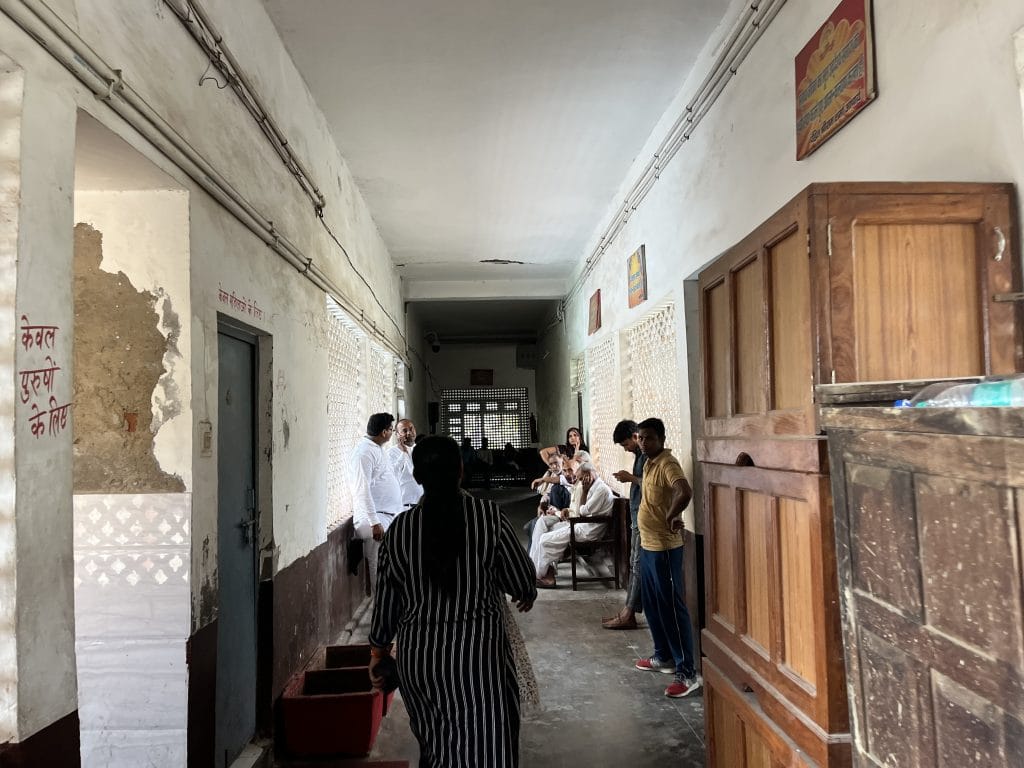
Also read: Stalkers, creepy 1 am emails, flowers – What two women judges in small towns battled
A working woman, and a judge
Meerut, which has emerged as a hub for legal education in western UP, is also grappling with women entering the judicial system.
“Law classrooms are no longer a boys’ club,” says MP Verma, a law professor at Meerut’s Chaudhary Charan Singh University. First-generation female students from adjoining rural districts are occupying the front seats.
According to data provided by the University’s faculty of law, female candidate enrolment rose to 32 per cent in 2022-23 from 16 per cent in 2015-16.
To meet the demand, the university has started offering law courses across 150 private and government colleges in UP.
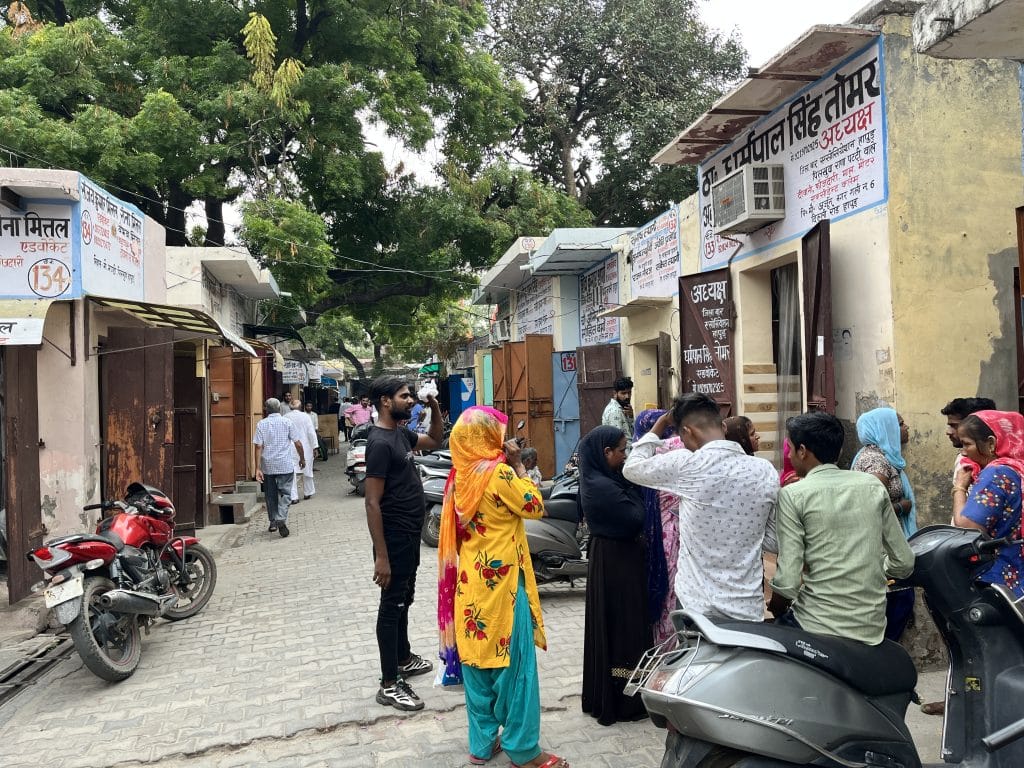
“The 2003 batch was truly pathbreaking. We saw women qualifying in the judicial exam,” recalls one judge from the batch. “Women announced to their families that they are going to enrol in law courses, and to our surprise, there was less pushback,” she said.
After completing her training, Shweta Dixit got her first posting as an additional civil judge (junior division) in Mathura. Since then, she has been posted in districts such as Bijnor, Baghpat, Allahabad, Basti, and now Hapur.
A BSc graduate who was born and brought up in Lucknow, Dixit is among three sisters who all went on to become the first working women in the family’s history. It’s a hard-won badge of honour.
Today, 25-year-old Reena Ansari is on the same journey. During her 25-km commute from her hometown Lawar to Meerut to attend law school, she reminds herself of her goals.
In 2018, she fought tooth and nail with her family and the entire village who wanted her to get married. That year, when she went to a coaching centre “for clarity”, she saw a young woman preparing for a mock interview. The woman’s name, Jeenat Parveen, was stuck in her head.
“A few months later, I saw her name in a newspaper article announcing that she was a judge. That day I found my calling,” said Ansari.
Chances are she may have to work out of a cramped chamber and make do with a washroom that has a broken door. But it’s a battle Ansari is ready to be a part of, when she joins the rank and file of women judges.
This is part of a series on women judges in India’s lower judiciary. Read all the articles here.



